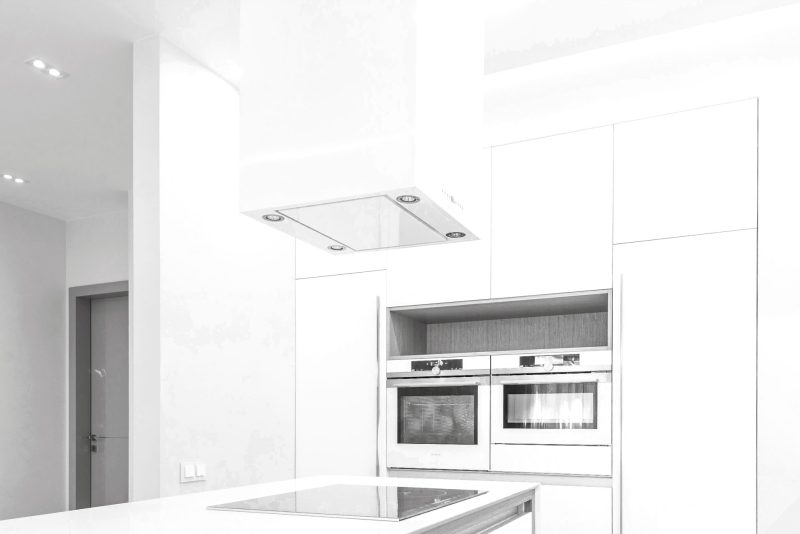Air pollution is a major health threat globally, and it’s not just outdoors — indoor air can also be polluted, leaving no safe space to breathe, which is a basic human right. To address this, it’s essential to understand why indoor air quality can deteriorate.
The primary reason for poor indoor air quality is the presence of harmful gasses and tiny particles released from items such as fuel-burning combustion appliances, tobacco products, building materials, furnishings, and household products inside your home.
Insufficient fresh air exacerbates this issue because it doesn’t bring enough outdoor air to reduce these indoor pollutants. Hot and humid conditions indoors can make things even worse.
Indoor pollutants can cause immediate problems like irritation of the eyes and throat, as well as long-term issues such as respiratory diseases and cancer. These health effects can vary based on sensitivity and exposure levels. Therefore, improving indoor air quality is vital.
If you’re interested in learning how to improve indoor air quality, this article is for you. It begins with explaining common home ventilation systems and their benefits, exploring how proper ventilation can greatly enhance your daily life.
Understanding home ventilation systems
This section will help you understand how home ventilation systems work, their operation concerning air quality issues, and the common components used in these systems.
Definition and purpose of home ventilation systems
Home ventilation is all about swapping indoor and outdoor air. A well-insulated and airtight house can trap harmful pollutants such as carbon monoxide, which is produced when you burn natural gas, propane, or even wood, along with moisture. This can be damaging to your home.
Your primary objective with home ventilation is to ensure you have fresh air indoors, safeguard your health, prevent issues like dampness, and uphold a safe, energy-efficient, and healthy living environment.
How ventilation systems mitigate indoor air pollution
Air distribution technology advancements bring significant progress, notably in personalized ventilation. These systems deliver clean air directly to an individual’s breathing space, creating a personal “clean air zone.”
Personalized supply and exhaust systems also help remove contaminants near unwell individuals. Real-time sensors in indoor environments offer immediate insights, enabling targeted mitigation measures.
These advancements greatly enhance indoor environmental quality by addressing contamination sources, accommodating diversity, and optimizing air distribution.
Common components of home ventilation systems
In a ventilation system, the components can vary depending on the type and purpose of the system. However, some common components include:
- Fan: This device generates airflow and creates pressure within the system.
- Louver: A louver functions like a window blind or shutter, controlling the amount and direction of air and light entering the system.
- Damper: This serves as valves or plates that regulate airflow within the system.
- Dehumidifier: This device is responsible for removing excess moisture from the air within the system.
- Silencer: A device designed to reduce the noise produced by the ventilation system.
- Air filter: Devices that capture and remove dust, pollen, and other contaminants from the air as it passes through the system.
- Dust collector: This component collects and disposes of the dust generated by the ventilation system.
- Cooling coil: Responsible for cooling the air within the system by transferring heat to a refrigerant or water.
- Artificial airway: A tube or mask delivers the air from the ventilation system to the patient’s lungs.
Types of home ventilation systems
Natural ventilation, like opening windows, was common in the past, but traditional methods lost effectiveness with a shift towards tightly sealed buildings for energy efficiency.
Mechanical ventilation offers diverse systems to remove stagnant indoor air and introduce fresh outdoor air, including exhaust, supply, balance, and heat recovery systems.
Exhaust ventilation systems
Exhaust ventilation systems depressurize buildings by expelling indoor air, drawing in fresh outdoor air through leaks and passive vents. Best for colder climates, they’re cost-effective and typically involve a single fan connected to a central exhaust point.
Connecting the fan to ducts in pollutant-prone areas like bathrooms and kitchens is recommended for better results. Passive vents in other rooms can reduce reliance on building leaks but may require larger pressure differences to work efficiently.
In warmer climates, caution is needed to prevent moisture-related issues due to depressurization. Also, there are certain concerns associated with exhaust ventilation systems, including:
- Pollutant ingress: Supply ventilation systems may inadvertently bring in pollutants like radon, molds from crawl spaces, attic dust, garage fumes, and flue gasses from appliances. This issue is exacerbated when exhaust fans in bathrooms, range hoods, and clothes dryers run simultaneously with the ventilation system.
- Energy efficiency: Exhaust ventilation systems can contribute to higher heating and cooling costs than energy recovery ventilation systems. This is because exhaust systems do not condition or remove moisture from the incoming outdoor air before it enters the house.
Supply ventilation systems
Supply ventilation systems use a fan to pressurize buildings, bringing in outdoor air while indoor air exits through openings, ventilation ducts, and intentional vents. They’re cost-effective and straightforward, with fans introducing fresh air into key living spaces and adjustable vents in other rooms.
These systems offer better control over incoming air quality, reducing outdoor pollutant infiltration and preventing the backflow of combustion gasses. They can filter air and manage humidity. Ideal for hot or mixed climates, they may cause moisture issues in cold climates by potentially leading to condensation and increased heating and cooling costs.
Supply systems may require mixing with indoor air to prevent drafts in winter, or an in-line duct heater can be used, but this increases operating costs.
Balanced ventilation systems
Balanced ventilation systems neither pressurize nor depressurize buildings but aim to introduce and exhaust equal amounts of indoor and outdoor air. Typically, they consist of two fans and duct systems, focusing on supplying fresh air to living areas and exhausting moisture-prone areas. Some designs filter outdoor air before introducing it. They are suitable for all climates. Some concerns include:
- Moisture control: Like other systems, they don’t remove moisture from outdoor air, potentially increasing heating and cooling costs compared to energy recovery systems.
- Cold air drafts: Introducing outdoor air can lead to winter drafts. Mixing outdoor air with indoor air or using additional heating may be necessary.
- Cost: Balanced systems are more expensive to install and operate due to their dual-fan and duct setup.
Heat recovery ventilation systems
Heat recovery ventilation (HRV) systems are a common recommendation for well-insulated buildings to conserve heat energy. However, it’s essential to factor in the electricity required for the fans.
The effectiveness of HRV varies depending on factors like building type, heating demands, and ventilation system specifics. In dwellings, HRV tends to outperform mechanical extract ventilation. However, HRV is generally less efficient in commercial buildings, except in colder climates.
Read more: Dr. Max Sherman: HVAC Roles in Improving Indoor Air Quality | On the House #13
Benefits of home ventilation systems
Home ventilation systems offer numerous advantages, including enhanced indoor air quality and well-being, as well as the mitigation of moisture to prevent mold formation. They also contribute to improved energy efficiency and overall comfort.
Improved indoor air quality and health benefits
Research on home ventilation and its impact on health reports that a greater number of individuals experienced improved well-being when home ventilation rates were increased, while a smaller proportion reported feeling worse.
In fact, health showed an improvement of over 50% with higher ventilation rates. Enhanced home ventilation appears to positively impact respiratory health for a significant portion of the population.
Reduced moisture and mold growth prevention
Your home’s ventilation system is crucial for keeping your place dry and stopping mold from growing. When you control moisture well, not only does your home stay comfy, but it also costs less to keep it warm or cool. Plus, it helps your insulation and sealing work better.
Enhanced energy efficiency and comfort
Having a home ventilation system can make your home use less energy and be more comfortable by bringing in fresh air from outside. If your home doesn’t have good ventilation, even if it’s well sealed, it can trap harmful substances like carbon monoxide and moisture, which can be detrimental to your home.
Read more: Building a Green Future: An Eco-Friendly Approach to Home Building
In conclusion
Prioritizing home ventilation is crucial for a healthier and more comfortable home. Proper ventilation provides cleaner air and improves overall health, prevents mold, enhances energy efficiency, and boosts comfort. With various types of home ventilation systems available, understanding their differences is essential to choosing the best system for your home.
If you would like to see more resources on ventilation, check out the Home Organization Science Labs. The lab uses the research of the Institute for Life Management Science to produce courses, certifications, podcasts, videos, and other tools. Visit the Home Organization Science Labs today.
Photo by


